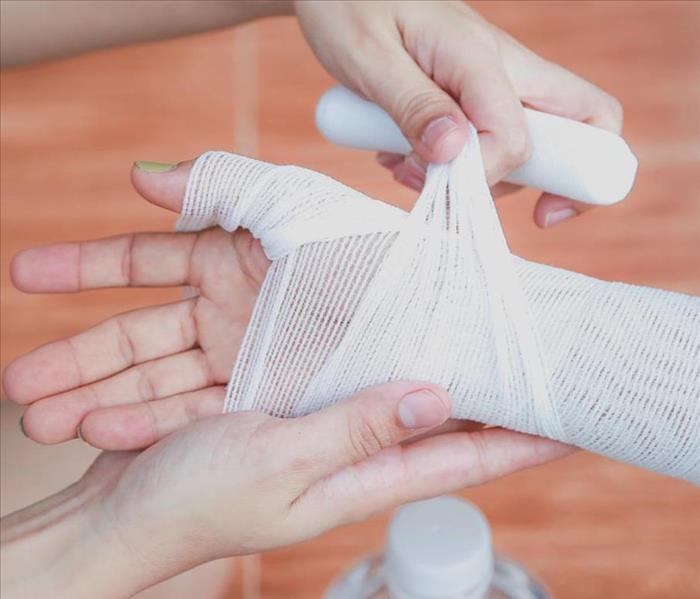Basic First Aid for Burns
10/10/2022 (Permalink)
Basic First Aid for Burns
Burns are one of the most common injuries that we see in the emergency room. They're also among the more serious, due to their ability to cause permanent damage as well as pain and scarring. If you're in a situation where someone has suffered from a burn, here are some tips for first-aid care:
First-degree burns affect the top layer of the skin and result in redness, pain, and swelling.
Cool the burn with cool water for at least 10 minutes, or until pain subsides. If blisters form, do not break them unless they are interfering with mobility. Do not apply butter, grease, or lotion to the burn as it will trap heat inside your skin which can cause blistering. Do not apply ice as this will further damage your skin's outer layers by causing more bleeding underneath your flesh.
If a burn is large or deep, seek medical attention. Get immediate medical treatment if the burn covers a large area of your body or if it covers an area of your face, hands, or feet.
Second-degree burns damage the second layer of the skin and result in redness, pain, blisters, and swelling.
First aid for second-degree burns includes removing any clothing that may be stuck to the skin and applying cold water to the burned area for at least 10 minutes or until the pain subsides. Seek medical attention if pain persists after 20 minutes of cold-water application or lasts longer than 72 hours after a burn occurs
Third-degree burns affect all layers of the skin and result in white or charred skin that may be numb to touch.
If you have a third-degree burn, get to the hospital immediately. Do not wait for the pain to go away or for the skin to turn white. If you can’t get to the hospital right away, treat it by applying cool water for at least 10 minutes and remove any clothing that is stuck to your skin. Cover with clean cloths or dressings if necessary and seek medical attention as soon as possible.
Apply cold water to the burned area for at least 10 minutes, or until pain subsides.
Cold water will help reduce pain and swelling. Do not apply ice directly to the skin; instead, use a clean cloth or towel soaked in cool water that you can hold against your skin.
Keep cool compresses on a minor burn for 15 minutes at a time, then remove them for 15 minutes before reapplying if needed. Unless instructed by a doctor or nurse, do not break blisters.
Seeking medical attention for burns.
If your burn is not minor and you have any of the following symptoms, seek medical attention:
- Pain that lasts longer than a few days
- Pain that increases in intensity
- Redness, swelling or blistering
Burns are a common injury that can be serious if not treated quickly. Be sure to seek medical attention immediately in the event of any burns, no matter how small they may seem.



 24/7 Emergency Service
24/7 Emergency Service
